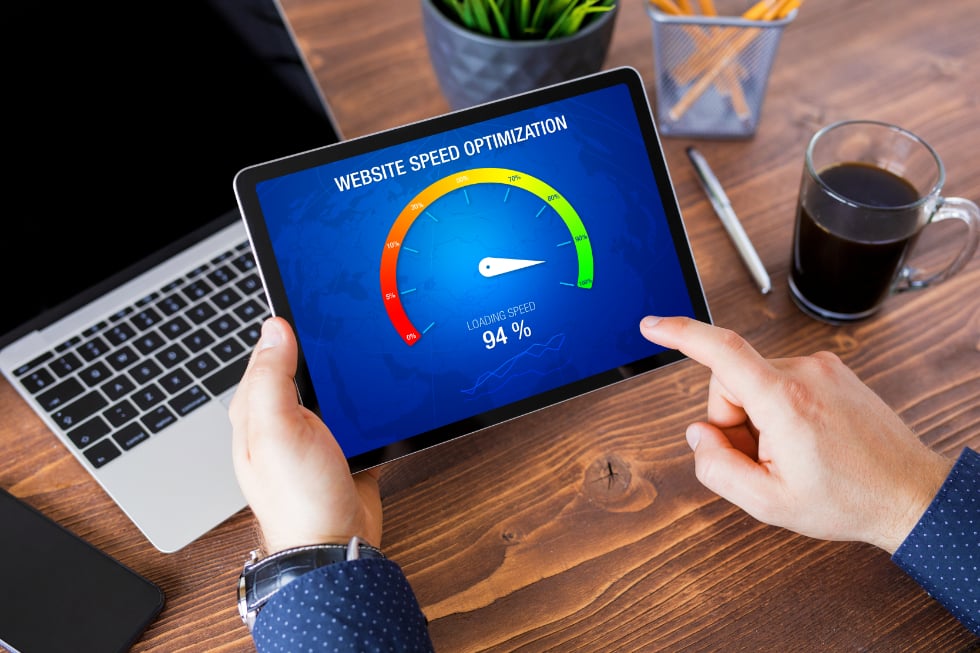SEO | How Does Page Speed Affect SEO?

In the vast digital landscape, search engine optimization (SEO) plays a pivotal role in ensuring online visibility and attracting organic traffic to websites. Among the numerous factors influencing SEO, page speed has emerged as a critical element that directly impacts website performance and user experience. This article aims to delve into the intricate relationship between page speed and SEO, highlighting the significance of optimizing page loading times.
Understanding Page Load Time
A page’s speed refers to the time it takes for a web page to fully load and display its content. It is crucial to comprehend the factors influencing page speed to effectively optimize it. Various elements contribute to the loading time, including server response time, image optimization, code efficiency, browser caching, and the utilization of content delivery networks (CDNs).
User Experience and Engagement
Page speed directly impacts the user experience and, by extension, user engagement on a website. Slow-loading pages can lead to higher bounce rates, where visitors abandon the site before it fully loads. Conversely, faster-loading pages tend to keep visitors engaged and encourage them to explore the website further.
Mobile Optimization and Page Load Time
In today’s mobile-centric world, optimizing page speed for mobile devices has become essential. Google’s mobile-first indexing prioritizes the mobile version of websites for indexing and ranking. Therefore, a slow mobile page speed can significantly impact a website’s search engine visibility and overall SEO performance.
Search Engine Ranking Factors
Search engines, particularly Google, have recognized the importance of page speed in delivering a positive user experience. Google’s algorithm considers page speed as one of the ranking factors, indicating its significance in SEO. Additionally, Google’s introduction of Core Web Vitals, a set of user-centric metrics, further emphasizes the need for optimal page load time.
Core Web Vitals and User-Centric Metrics
Core Web Vitals is a set of three metrics introduced by Google to measure the user experience of web pages. These metrics include Largest Contentful Paint (LCP), which assesses the time it takes for the largest element on a page to load; First Input Delay (FID), which measures interactivity by analyzing the delay between a user’s first interaction and the page’s response; and Cumulative Layout Shift (CLS), which quantifies visual stability by evaluating unexpected layout shifts during page load. Websites that optimize these metrics and provide a seamless user experience are likely to rank higher in search results.
Crawlability and Indexing
A page’s speed also influences how search engine crawlers access and index websites. Crawlers have a limited crawl budget—the number of pages they can crawl within a given timeframe. Slow-loading pages consume a significant portion of this budget, potentially resulting in fewer pages being indexed. XML sitemaps, which provide a roadmap of a website’s structure, help search engines efficiently crawl and discover relevant pages. Additionally, the rendering of resources during page load affects the speed at which search engines can index and analyze the content of a page.
Mobile-Friendliness and Mobile SEO
Mobile page speed is crucial for mobile SEO success. With the widespread use of smartphones, Google has shifted its focus to mobile-first indexing, considering the mobile version of websites as the primary source for ranking and indexing. Therefore, optimizing mobile page speed is vital to ensuring search engine visibility and overall SEO performance. Accelerated Mobile Pages (AMP) is another technique that can be utilized to deliver lightning-fast page loading times on mobile devices.
Competitor Analysis and User Expectations
Benchmarking against competitors is a valuable strategy to understand user expectations regarding page speed. Analyzing the page speed of top-ranking websites within a niche provides insights into the performance standards users have grown accustomed to. By meeting or exceeding these expectations, website owners can enhance their chances of attracting and retaining visitors.
Page Speed Optimization Techniques
To improve the page’s speed, website owners can employ various optimization techniques. These include
Server Optimization
Investing in reliable hosting solutions and utilizing content delivery networks (CDNs) can significantly improve server response time and content delivery speed.
Image Optimization
Compressing images, choosing appropriate file formats, and implementing lazy loading techniques help reduce the file size and enhance image loading times.
Code Optimization
Minifying code by removing unnecessary characters and spaces, as well as implementing browser caching, contributes to faster page loading.
Third-Party Scripts and Plugins
Evaluating and removing unnecessary third-party scripts and plugins and utilizing asynchronous loading techniques can streamline page rendering and speed up the overall loading process.
Things To Do In Lakewood Ohio
Lakewood Ohio News


